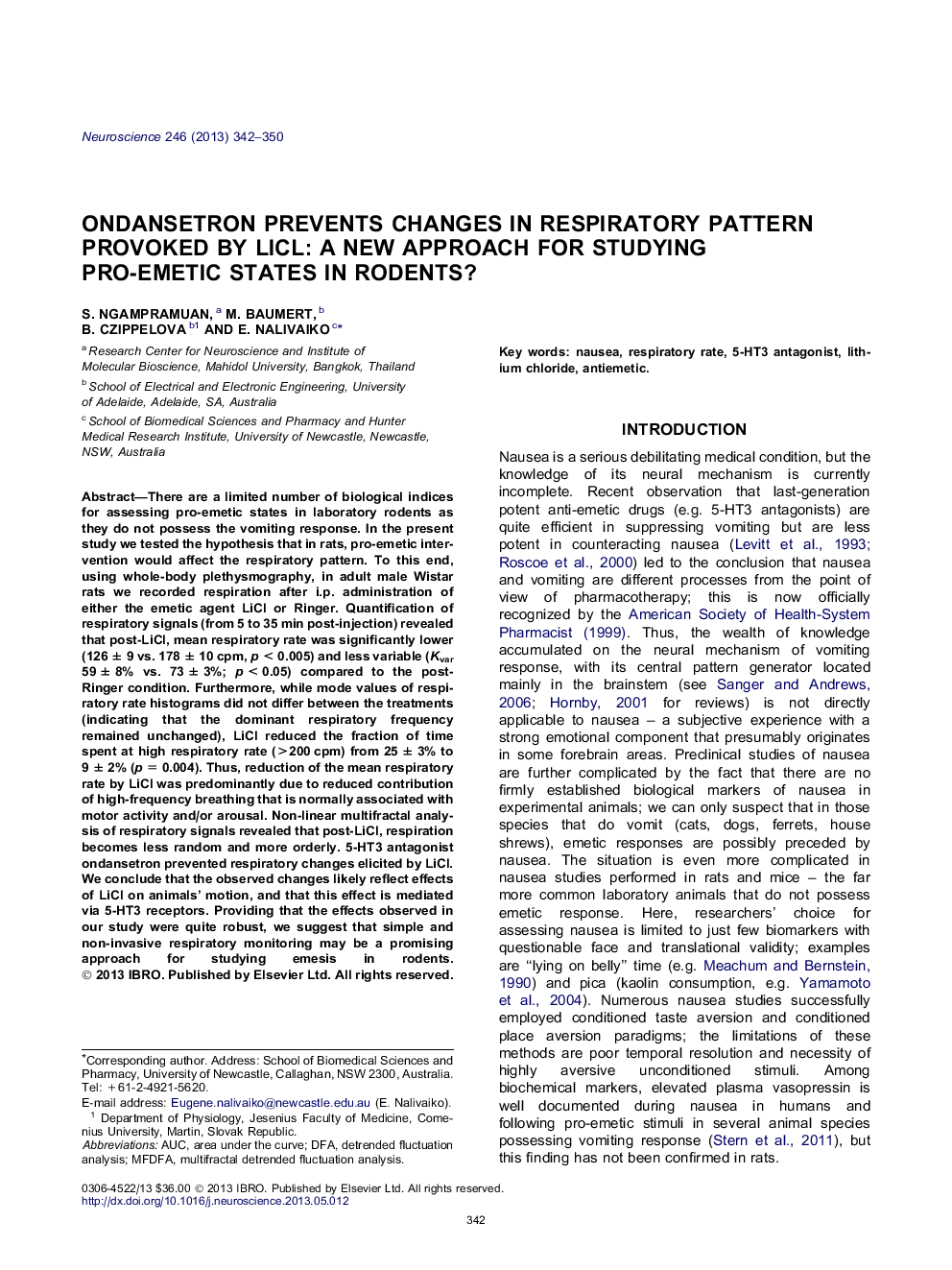| Article ID | Journal | Published Year | Pages | File Type |
|---|---|---|---|---|
| 6274599 | Neuroscience | 2013 | 9 Pages |
Abstract
There are a limited number of biological indices for assessing pro-emetic states in laboratory rodents as they do not possess the vomiting response. In the present study we tested the hypothesis that in rats, pro-emetic intervention would affect the respiratory pattern. To this end, using whole-body plethysmography, in adult male Wistar rats we recorded respiration after i.p. administration of either the emetic agent LiCl or Ringer. Quantification of respiratory signals (from 5 to 35 min post-injection) revealed that post-LiCl, mean respiratory rate was significantly lower (126 ± 9 vs. 178 ± 10 cpm, p < 0.005) and less variable (Kvar 59 ± 8% vs. 73 ± 3%; p < 0.05) compared to the post-Ringer condition. Furthermore, while mode values of respiratory rate histograms did not differ between the treatments (indicating that the dominant respiratory frequency remained unchanged), LiCl reduced the fraction of time spent at high respiratory rate (>200 cpm) from 25 ± 3% to 9 ± 2% (p = 0.004). Thus, reduction of the mean respiratory rate by LiCl was predominantly due to reduced contribution of high-frequency breathing that is normally associated with motor activity and/or arousal. Non-linear multifractal analysis of respiratory signals revealed that post-LiCl, respiration becomes less random and more orderly. 5-HT3 antagonist ondansetron prevented respiratory changes elicited by LiCl. We conclude that the observed changes likely reflect effects of LiCl on animals' motion, and that this effect is mediated via 5-HT3 receptors. Providing that the effects observed in our study were quite robust, we suggest that simple and non-invasive respiratory monitoring may be a promising approach for studying emesis in rodents.
Keywords
Related Topics
Life Sciences
Neuroscience
Neuroscience (General)
Authors
S. Ngampramuan, M. Baumert, B. Czippelova, E. Nalivaiko,
